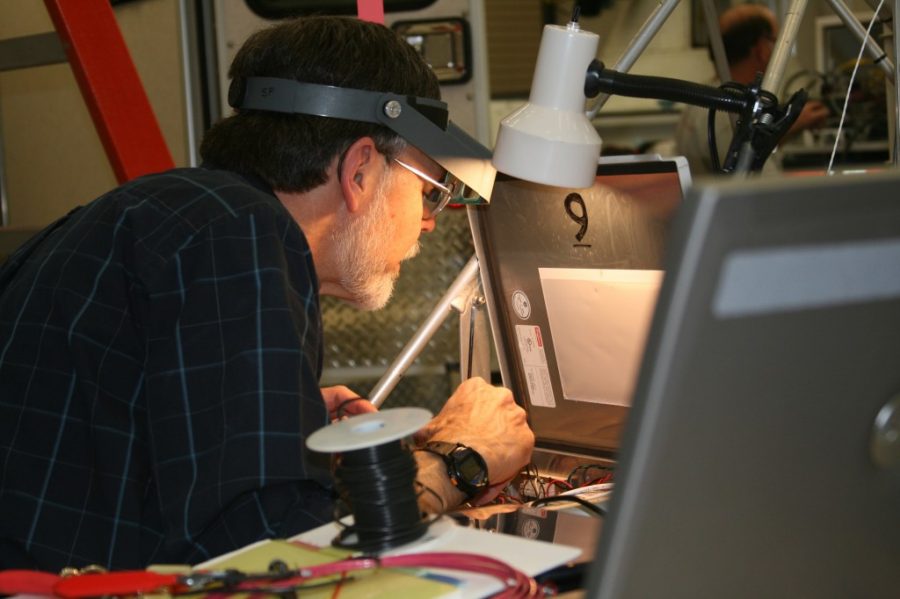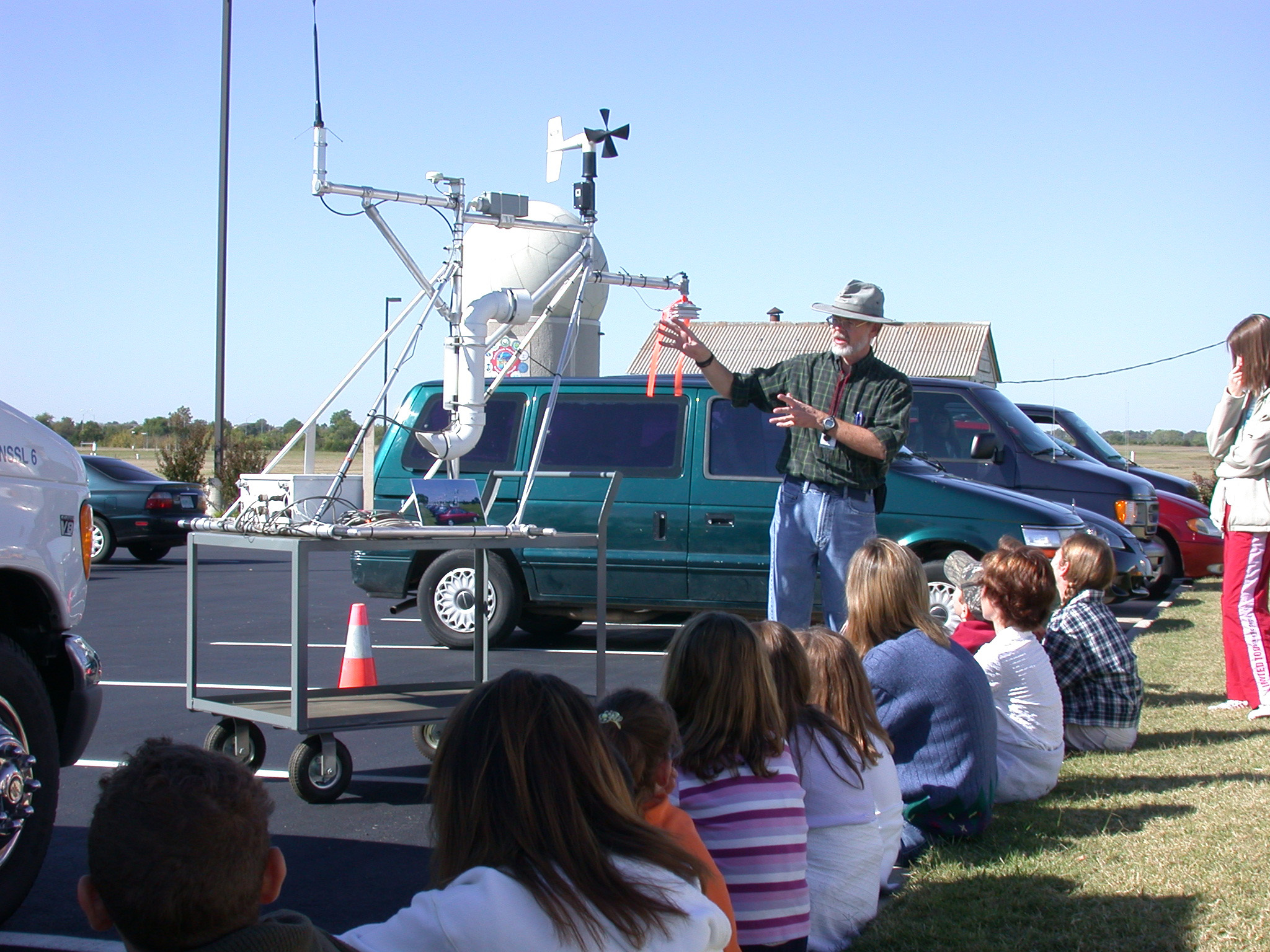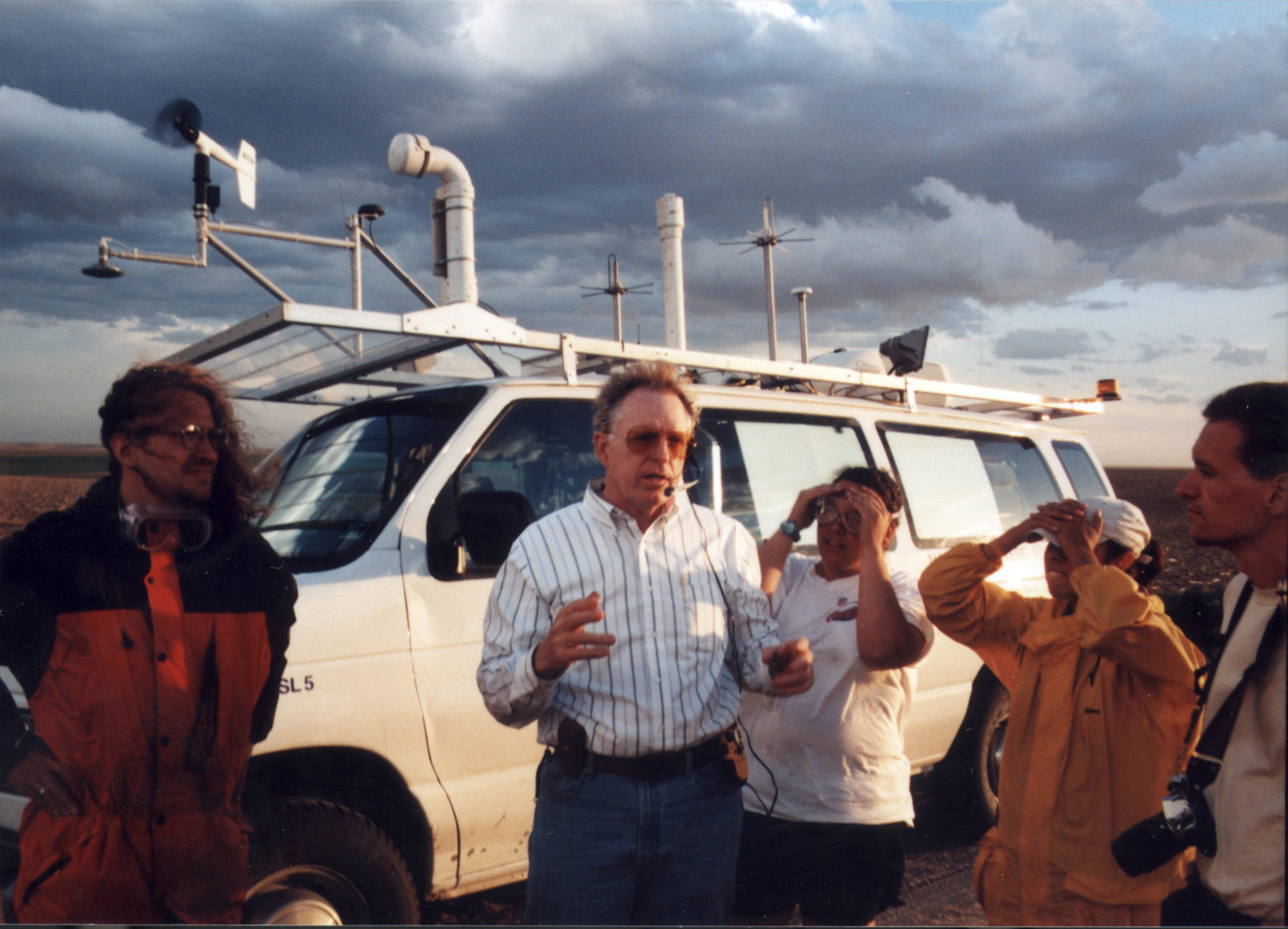Sherman Fredrickson remembers a time when NOAA National Severe Storm Laboratory’s tools recorded atmospheric measurements without high-speed computers.
Fredrickson worked as an instrumentation meteorologist at NSSL for 47 years. In early December, he retired from federal service, and colleagues celebrated him and his years of service with a small come-and-go reception.

He used his talents to build unique instruments to measure the atmosphere and help scientists learn more about severe weather. He enjoys conversations that include the question, “I wonder why…,” which launched him into his career with field observation systems and NSSL’s Mobile Mesonets.
“I asked the techs, ‘Why do some sensors not work quite like they are supposed to?’And I was told, ‘Ask the scientists. They know all about these issues,’” he said. “I asked the scientists and their reply was, “‘We didn’t know about problems with the instruments. We presumed the techs had everything working just fine.’ Seems I’d found a rare niche and have never had a dull day since then.”
Fredrickson remembers when he first started at the lab. NSSL’s weather mesonets — sites recording continuous winds, temp, RH, pressure and rainfall — were not computerized. Measurements were recorded on pen and ink stripcharts and had to be changed every three to four days.
“Precise time for each station was based on setting our wristwatches each morning by listening to the voice recording of a international shortwave time standard, called WWV,” he said. “My off-season job was stamping — this was ink-pad stamping — hundreds of feet of stripcharts with station name, date and time. We’ve significantly advanced from those days.”



